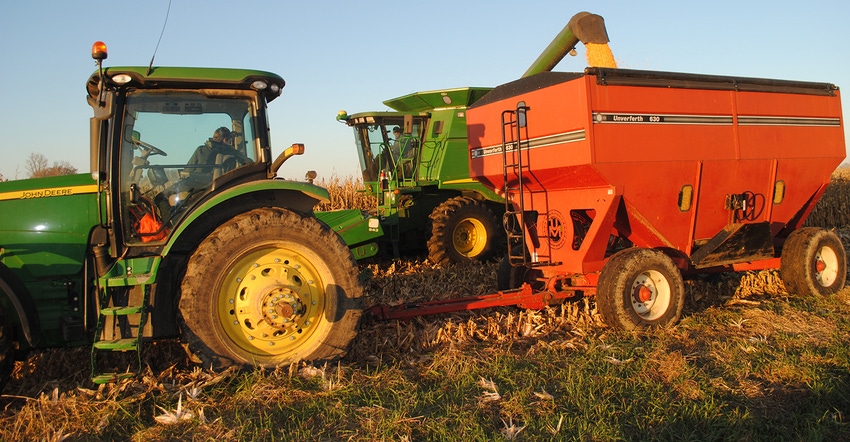December 4, 2017

By George Koepp
So, how did the 2017 crop year turn out for you? December is always a great time of the year for evaluation and reflection on your cropping decisions and efforts during the previous growing season. This is one of the most important steps in good farm management, so don’t skip or skimp on this part of the job.
Some important questions you should focus on:
• Were your yields better or worse than the previous three years?
• Were you able to put up good-quality crops and get them into good storage condition?
• Did you choose the best varieties for your land?
• How did varieties compare this year?
• What was the moisture percent of your corn and soybeans at harvest?
• What was the percent protein of your harvested hay?
• Is your feed inventory adequate?
• How well did you do at weed, insect and disease control this past year?
• Do you have any soil erosion issues that need attention, such as small or larger gullies that are beginning to form?
Feeding crops properly
With all the rain and cool weather early in the growing season, soil and crop nutrition were a concern for farmers and certified crop advisers. How did your nutrient management plan perform under these conditions? No matter what the growing conditions, feeding crops properly requires knowing their nutrient needs and matching them with the “rights” of nutrient stewardship — the right time, right rate (amount), right source (chemical form), right placement, and using the right data to make the right decisions.
We have all seen the changes in the weather and know we are trending toward a slightly longer growing season with more extreme weather events. We have witnessed harder downpours of rain, longer wet stretches and longer periods of drought. We cannot control the weather, but we can manage our fields and cropping systems, and work to mitigate some of the negative and devastating effects of extreme weather events.
How is your data organized and saved? Some farmers have computer-generated fertilizing, planting, spraying and yield maps. Some have weight tickets for their grain harvest, and others have bins, barns or bunkers to measure to determine crop yield. The important thing here is that you have a system and you use it to make good decisions.
In today’s farming industry, it takes more than long hours and hard work to be profitable and successful. It requires knowledge, skill and good data to be able to make good decisions and grow good, profitable crops. Each year is a little different, so what worked well this year might not work out the same next year. However, farmers are optimists and always believe they will make better decisions, so the next year farming will be the best ever.
University of Wisconsin Extension is only a phone call or email away. Your local county agriculture agent has access to many tools and specialists to help you analyze your data and assist you with making sound independent management decisions. You have the power of UW research and recommendations at the tip of your fingers. You don’t have to be a member or purchase anything to access this expertise; just call or email your local UW Extension office. Answering the questions listed earlier thoughtfully and then evaluating your effort and results in 2017 is the very first, and most important, step in planning for a successful and profitable 2018.
Koepp is the Extension ag agent in Columbia County, Wis.
You May Also Like




